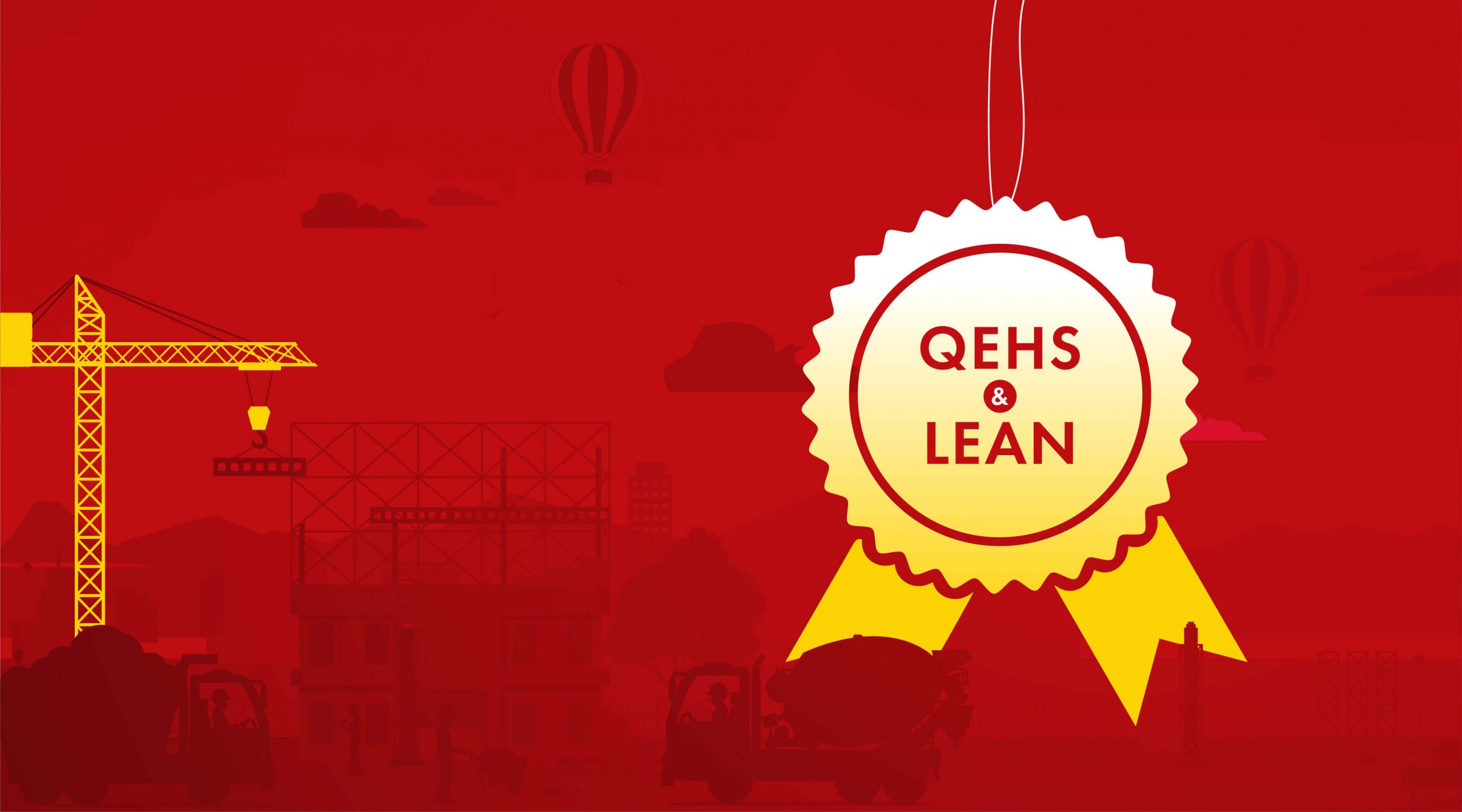
Achieving Construction Excellence With QEHS & LEAN
12th Mar, 2022
The construction industry is an ever-growing ecosystem, and in this decade too it is poised for massive growth. Factors such as low interest rates, business-friendly policies from the Government and an upsurge in demand, all signal towards prospering times ahead. However, there are critical challenges that the industry as a whole is grappling with, and must find the right solutions to.
For instance, do you know that only 30% of the construction projects get completed in the pre-decided budget? And even fewer projects are able to successfully meet the deadline of delivery?
Mitigating issues like these is the way forward to ensure a positive and healthy functioning in the construction ecosystem. In line with this, construction companies should look to welcome and apply industry-specific and globally recognized standards – enabling efficiency and cost-effectiveness throughout their projects. Two such remarkable and proven-to-work standards are QEHS & LEAN. Let’s dig deep and understand how implementing these two frameworks can lead to transformative results.
.
QEHS Framework
QEHS, formally known as Quality, Environmental, Health and Safety Management System, is an Integrated Management System (IMS) aimed to empower organizations to achieve excellence through optimizing their quality, environmental performance and health & safety of employees.
This framework handles a plethora of management functions and procedures that can be applied throughout major construction projects. It also shapes and defines the corporate arrangement of business activities, translating into operational procedures for practical application in the construction projects undertaken.
Implementation of this dedicated standards-based and process oriented framework can provide the potential to deliver greater organizational efficiency and effectiveness, in a field where the management of quality, environment, and health & safety are at the forefront of systems evolution.
QEHS encompasses multiple ISO standards including:
- ISO 9001 Quality Management Systems
- ISO 14001 Environmental Management Systems
- ISO 45001 Occupational Health and Safety
.
Through successful implementation of QEHS, construction companies can successfully deliver their projects in a fixed period of time and in line with the pre-approved budget, that too without compromising on the quality. QEHS ensures Establishment and Implementation of:
- Procedures & Work Instructions for Design, Estimation, Purchase, Construction, Quality, Stores, Sales, etc.
- Quality Standards
- Environmental and Health & Safety Risk Analysis
- Policy, Objectives & Targets for all functions and processes
- Audits and Periodic Review
- Continual Improvement plan
.
LEAN
The Lean methodology is a modern approach for managing construction in a way that delivers truly successful projects – eliminating waste of all kinds at all stages and keeping both time and finances in check at the same time.
The Lean approach emphasises on maximising customer value through the implementation of predefined holistic practises at all times, paving way for a smoother execution & satisfactory completion of projects.
There are 6 main types of tools under the Lean framework which ensure its applicability and final impact. Types of lean tools are:
- 5S
- Kaizen
- Just in Time
- TQM
- Visual Management
- Value Stream Mapping
.
These Lean tools systematically improve cross-departmental efficiency as well as eliminate non-value adding and time-consuming activities for Waste Elimination, the Top 7 Areas under Focus are:
- Transportation: To eliminate waste produced due to early arrival and deployment of manpower, material and construction equipment.
- Inventory: To eliminate surplus inventory that sits idle, adding up cost and taking up extra storage space.
- Movement: To eliminate unnecessary trips taken by manpower across the site to transport material and construction equipment.
- Wait Time: To eliminate wastage of time due to unavailability of required raw materials and construction machinery.
- Utilization of Resources: To eliminate incorrect delegation of tasks and ensure each member of the workforce is assigned work as per their skills and expertise.
- Excess Processing: To eliminate non-value adding processes and tasks that were designed to improve efficiency but failed to create any significant difference.
- Overproduction: To eliminate time gap between completion of one task and beginning of the next one.
.
LEAN Benefits
Continuous improvements result into following long-lasting results:
- Enhanced Safety
- High-quality Construction
- Improved Productivity
- Reduced Waste
- Better Risk Management
- Fast Track Project Delivery
- Greater Customer Satisfaction
- Maximum Returns
While QEHS and LEAN can be individually implemented, taking into account the number of problems both of these systems solve, it is advisable to implement both QEHS and LEAN to ensure optimum construction excellence.
.
QEHS & LEAN is Applicable to
- Residential Home Building and Renovation
- Heavy Industrial Construction
- Commercial and Institutional Construction
- Engineering Construction
![]()
How 4C Can Help Your Organization Implement QEHS and LEAN
To help your construction enterprise receive all the benefits of QEHS and LEAN, our team of certified consultants is equipped to provide you with exceptional guidance and support. Our consultants have helped 100+ clients implement both of these frameworks seamlessly. To achieve construction excellence and implement QEHS and LEAN in your organization, contact one of our dedicated QEHS and LEAN consultants now.
